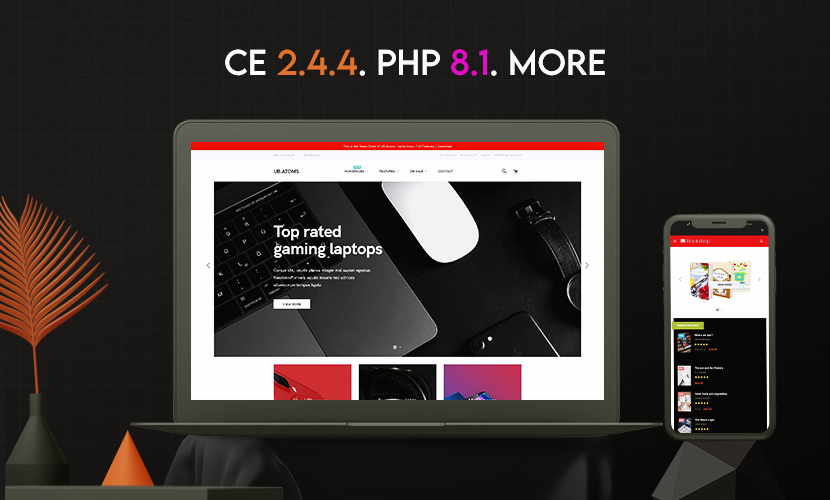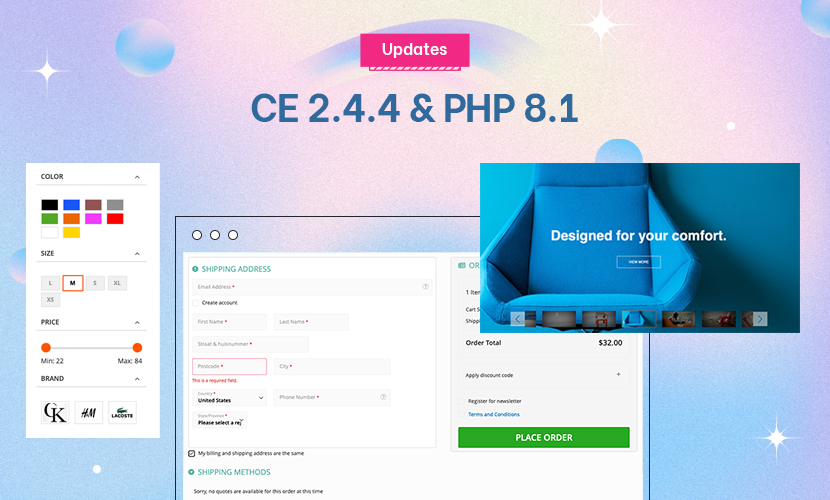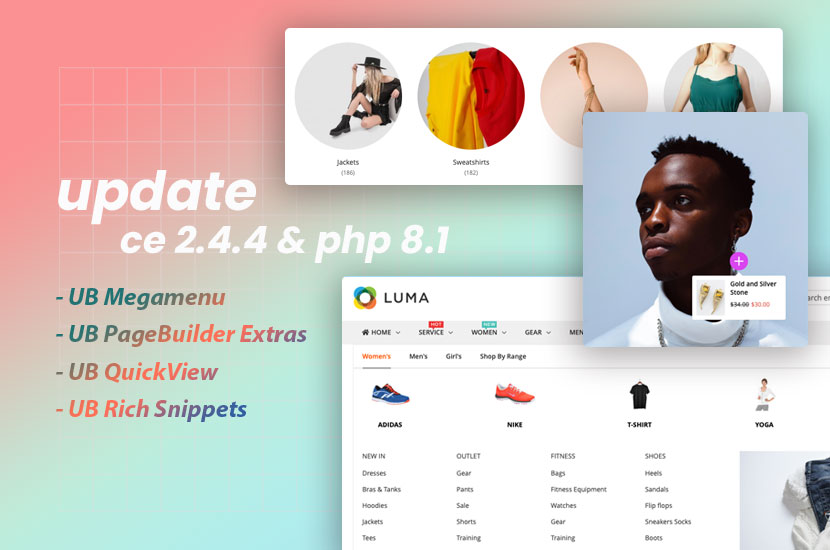There are a number of key differences between product detail pages and category pages in Magento, but the overall SEO goals remain the same.
- Increase crawling. To give more pages a chance of getting found by the search engines.
- Increase indexation. To get more unique written content indexed.
- Influence ranking. Emphasize the right keywords and incorporate them into the appropriate page elements.
- Improve search results presentation. Make sure the search result snippets are really enticing to searchers.
- Above all, we are doing this because we want to increase sales.
What Are The Differences Between Category and Product Pages?
Category pages have a different set of issues when it comes to crawling and indexation.
While product pages are generally rich in content, category pages usually lack it.
Nearly all products contain a unique description of some sort. When dealing with categories, people assume descriptions aren’t necessary because most users don’t need to read them. Nevertheless, pages with a small amount of written content always do better than pages with no written content. We will need to add short descriptions and image alt text to all of our category pages.
It is also important to note that most category pages are a multi-page list of products, and paginated pages are another source of duplicate content — from the perspective of the search engines. So we will need to take all of the “previous” and “next” links into account in our SEO modification. Category pages also tend to contain layered navigation systems that make it easier for the user to access certain products. These systems can lead to infinite crawl spaces — see Google’s explanation (http://googlewebmastercentral.blogsp…beyond-no.html) — and have an adverse effect on crawling.
Improving Crawling
Step 1. Enable the auto-generated sitemap and canonical tags for the category page.
We did the same thing when we modified the product detail page, and it is just as important for category pages. If you already did this in the previous article, you can skip the following step.
Go to System > Configuration > Catalog > Search Engine Optimizations.
Step 2. Handle pagination issues.
There are two approaches to handle duplicate content caused by paginated pages. You can canonicalize all pages to the "view all" page. This is the preferred approach as search visitors generally prefer to land on this page. However, in many cases those pages have so many products that it takes too long to load. In such case, it is better to implement a Google’s "rel=prev" and "rel=next" tags.
Let’s first look at how you go about adding "rel=prev" and "rel=next" tags to paginated category pages --> http://googlewebmastercentral.blogspot.com/2011/09/pagination-with-relnext-and-relprev.html
Open /app/design/frontend/base/default/template/page/html/head.phtml (wherein "base" is your Magento package name and "default" is the theme name) and insert the following PHP code anywhere.
This code detects which paginated category page it is currently on, and then it inserts the corresponding set of rel=prev and/or re=next tags.
Now, here is how you enabled a "view all" page, so we can canonicalize to it.
Go to System > Configuration > Catalog.
Change “allow all products per page” to "yes."
Step 3. Hide the layered navigation — i.e., faceted navigation — from search bots.
You can hide the layered navigation from search bots by adding rel=”nofollow” to its links. Search bots won’t follow these links and avoid ending up in infinite crawl spaces.
The files to change are located under /app/design/frontend/YOUR-PACKAGE-NAME/YOUR-TEMPLATE-NAME/template/catalog/layer
Faceted navigation can lead to infinite crawl spaces, which confuse search bots.
Improving Indexation
Step 1. Add a brief description for each category in the store.
You can hire this out on Mechanical Turk, Odesk, or Elance if you can’t do it in-house. Make sure the descriptions include the category name — as the main keyword — and read like ads so they attract clicks.
Go to Catalog > Manage Categories and create your new category or edit your pre-existing categories.
Step 2. Give each product image alt text.
Go to Catalog > Products > Manage Products > Images.
Each image will have a “label” field. Make sure you put a unique description in this field.
It might seem like this is a product page modification, but these images eventually make their way to the category page. You’ll notice this if you do a quick search for the product.
Step 3. Give the best selling products a top spot on the category’s main page.
Internal linking is a powerful way to spread page reputation from link-rich pages to link-poor ones. The category pages of any ecommerce site are some of the best-linked pages. It is wise to link from them to the most important products so those products have a good chance to rank high.
The steps required to do this are not easy, but fortunately here is a nice and detailed tutorial on Magento’s site that explains how to do it --> http://www.magentocommerce.com/wiki/…atured_product
Influencing Rankings
The category name is generally the best keyword for the category. There is an exception to this rule. Let’s say a better name could replace the category name, because we found it by conducting proper keyword research.
Similar to the product, it is important for the category name to be inside of an H1 tag. Thankfully, Magento does this by default. However, if you are going to be modifying any kind of ecommerce template, you need to be aware of this.
As you can see, the only truly significant change is the number of results shown on each category page. You need to make sure Google recognizes the results as a single cohesive entity. The rest is very similar to the product detail page.
This question is now closed


